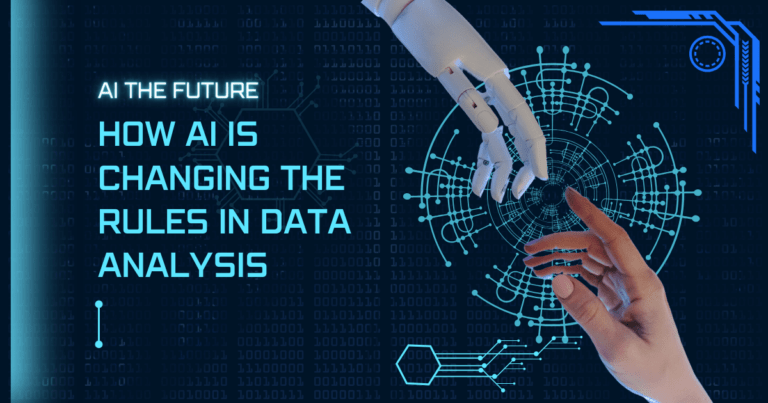How AI Is Changing The Rules Of Data Analysis
Data has become essential to corporations, governments, and organizations all around the world in the current digital era. The sheer volume, velocity, and variety of information generated every day is overwhelming traditional methods of analysis, which are straining to keep up with the exponential growth of data. Let us introduce you to artificial intelligence (AI), a revolutionary technology that is transforming the data analysis industry. We will look at how artificial intelligence is changing the game in data analysis and making it more accessible, accurate, and efficient than ever in this blog post. AI in Data Analysis AI is the umbrella term for a variety of technologies that allow computers to mimic human cognitive processes and learn from data without explicit programming. Examples of these technologies include machine learning, deep learning, and natural language processing. In the field of data analysis, artificial intelligence (AI) algorithms have the unmatched speed and precision to sort through enormous datasets, spot trends, and extract insightful information. Efficiency with Machine Learning Conventional data analysis techniques are laborious and frequently call for human intervention. AI-powered machine learning algorithms streamline the analytical process and drastically cut down on the time and effort needed to extract valuable insights from data by automating a number of tasks like feature selection, data preprocessing, and model training. Detect Hidden Patterns with Deep Learning A branch of machine learning called “deep learning” has been quite effective at revealing links and patterns in large, intricate datasets. Deep learning algorithms can detect complex patterns that may escape conventional analysis methods by employing neural networks with numerous layers of abstraction. This allows for more precise predictions and decision-making. Addressing Data Variety with Natural Language Processing Data can be found in many different formats in today’s digital world, such as text, photos, videos, and sensor data. A subfield of artificial intelligence called natural language processing (NLP) provides tools for computers to comprehend, interpret, and produce human language. Through the use of natural language processing (NLP) algorithms, businesses may examine unstructured text data from sources like emails, social media, and customer reviews. This allows them to get important insights on customer sentiment, industry trends, and new problems. AI-driven Data Visualization and Interpretation In order to communicate complex information in a way that is clear and understandable, data visualization is essential. Advanced algorithms are used by AI-powered data visualization systems to automatically create informative visuals from raw data, including graphs, charts, and heatmaps. These visualizations help decision-makers quickly recognize trends, patterns, and outliers in addition to facilitating data exploration and analysis. Challenges and Considerations in AI-driven Data Analysis Although artificial intelligence (AI) has the potential to revolutionize data analysis, there are a number of issues and concerns to be aware of. These include issues with data security and privacy, algorithmic biases, the interpretability of AI models, and the requirement for ongoing results validation and monitoring. To ensure the responsible and ethical use of AI in data, addressing these issues calls for a multifaceted strategy requiring cooperation between data scientists and the domain. Real-world Applications and Success Stories Artificial intelligence (AI)-powered data analysis is already causing waves in a number of industries, spurring innovation and providing real advantages. AI is helping businesses gain new insights, streamline operations, and gain a competitive edge in today’s data-driven economy. Examples of these applications include demand forecasting in supply chain management, personalized recommendations in e-commerce, and predictive analytics in healthcare and finance. The Future of AI in Data Analysis The use of AI in data analysis has a bright future ahead of it. We may anticipate more developments in fields like autonomous data analysis, augmented analytics, and AI-driven decision support systems as AI technologies continue to grow and develop. However, in order to overcome technological, ethical, and legal obstacles, achieving the full potential of AI in data analysis would necessitate continued research, funding, and cooperation. In summary, artificial intelligence (AI) is radically changing the rules of data analysis, enabling businesses to derive meaningful insights from data at a speed, precision, and efficiency never before possible. Businesses and decision-makers may unleash the full potential of their data assets and spur innovation in the digital age by adopting AI-driven techniques. One thing is for sure as we head into this AI-powered future: there are countless opportunities for data analysis. Read More
